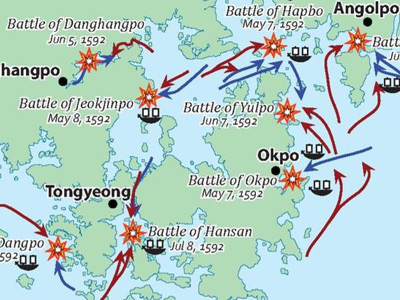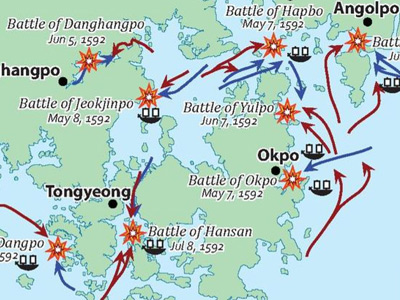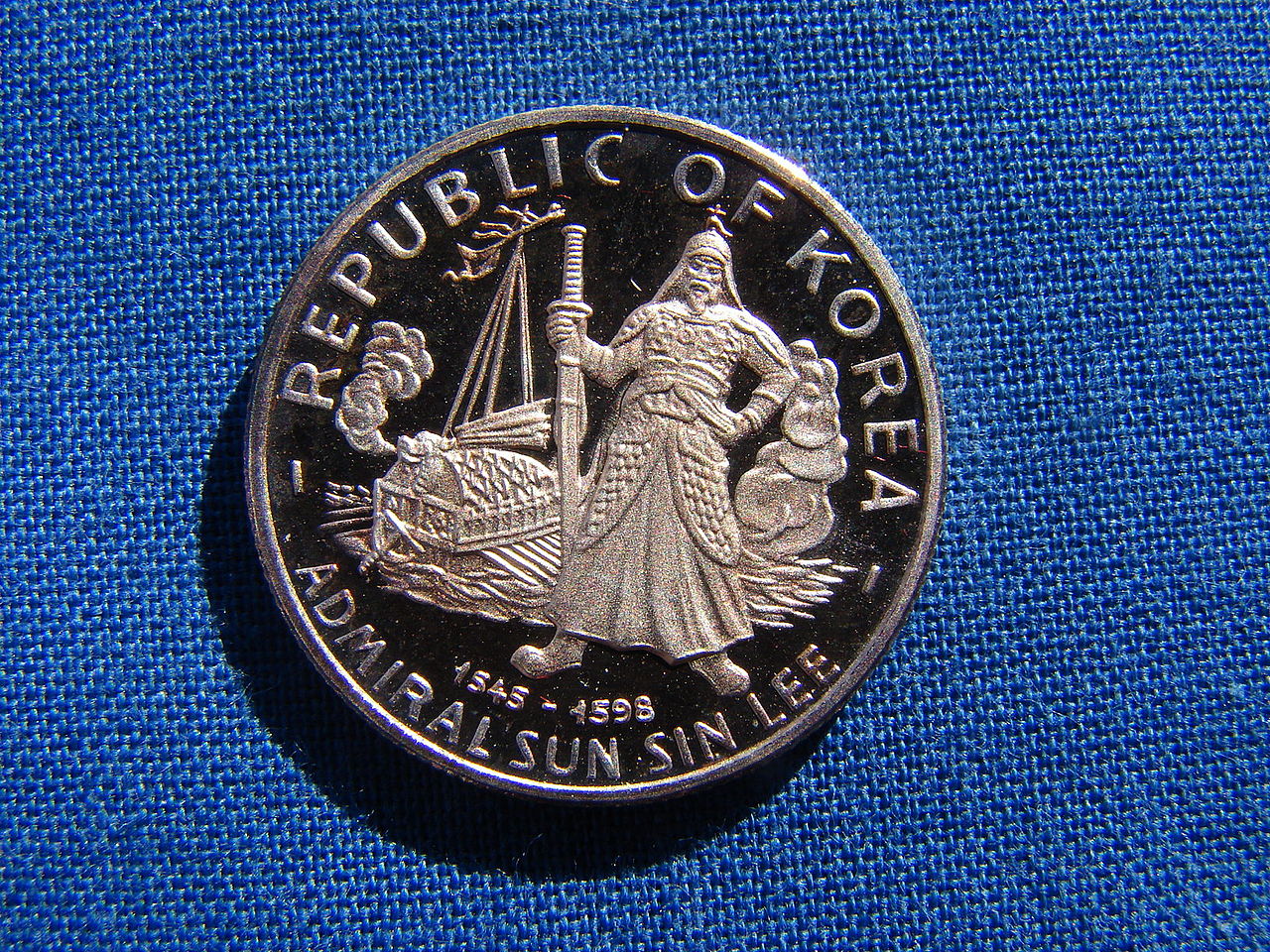Battle of Myeongnyang (1597)

Prelude
Admiral Yi Sun-sin was hastily reinstated as Supreme Commander of the Regional Navies after Won Gyun was killed at the Battle of Chilchonryang. Yi initially only had 10 panokseon ships at his disposal, which had been saved by Gyeongsang Right Naval Commander Bae Seol, who retreated early in the Battle of Chilchonryang. Bae Seol had originally saved 12 ships, but lost two while on his retreat towards Hoeryongpo. Two ships were brought by newly appointed Jolla Right Naval Commander Kim Eok-chu, and by the time of the battle, Yi had acquired another warship, likely one of the two that Bae Seol had previously lost. Thus, in total, Yi had 13 warships. Although Yi only found 120 men initially, some of the survivors of Chilchonryang rallied to him, and he had at least 1,500 sailors and marines by the end of September.
At that time, King Seonjo, who judged that the Joseon navy had lost its power and would never be restored again, sent a letter to disband the navy and have its men join the ground forces under General Kwon Yul. Admiral Yi responded with his own letter, stating: "Even though our navy is small, as long as I live the enemy cannot despise us."
Before the main body of the Japanese navy advanced into the Yellow Sea, they sent out a few probing missions with armed scouting parties. At this time, Admiral Yi's fleet was south of the Myeongnyang Strait near Oranpo. In October 8, an advanced scouting party of eight Japanese vessels staged a surprise attack, which the Joseon fleet drove off. Yi retreated further north to Byeokpajin, on the northern end of Jindo island. On October 12, Bae Seol fled (he would be found later by Joseon authorities and executed for desertion). On October 17, a Japanese scouting fleet of 13 ships launched a night attack which, after heavy fighting, was also repulsed.
By this time, through the reports of their scouting forces, the Japanese were aware of the presence of Joseon naval remnants that intended to resist their advance. Well armed scouting forces alone were not going to defeat or scatter the Joseon remnants, so the Japanese began amassing a much larger fleet. Admiral Yi's diary mentions reports of around 55 Japanese ships massing near Oranpo on October 17. With Japanese naval activity increasing, Admiral Yi did not want to fight a major battle with his back to the Myeongnyang Strait, so on October 25 he decided to withdraw further north and hide his ships in the shadow of the hills on the opposite (northern) side of the Myeongnyang Strait, near Usuyeong (우수영).
HISTORY

RESOURCES
This article uses material from the Wikipedia article "Battle of Myeongnyang", which is released under the Creative Commons Attribution-Share-Alike License 3.0.
© Stories Preschool. All Rights Reserved.










